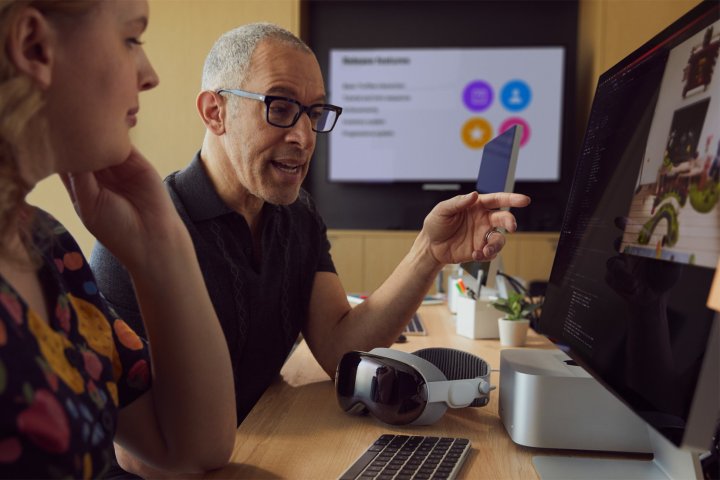We’ve not yet seen the full rollout of Apple’s M4 chip family — the M4 Ultra is still yet to make an appearance — but already we’ve just learned that the M5 chip is now in production . That means it’ll probably arrive in Macs either late this year or early next year.
If you’ve been waiting to buy a new MacBook Pro , that could mean 2026 is the year to finally pull the trigger. After all, Apple is expected to fully redesign its flagship laptop for next year’s release, and if that coincides with a powerful new M5 chip, all the better.
But there’s another device the M5 chip is rumored for: the Vision Pro headset. And on that front, things are a lot more complicated. On the surface, it looks encouraging. The M5 will likely bring increased performance and better efficiency, the latter of which could lead to improved battery life in the Vision Pro.
But there’s another thing we could see when the M5 drops into the mixed-reality headset: the inclusion of Apple Intelligence , the company’s artificial intelligence (AI) system. While the M2 in the existing Vision Pro can run AI (it does so in Macs, after all), it can’t do it in the Vision Pro where it also needs to handle many other heavy processing workloads.
Adding artificial intelligence to the Vision Pro makes sense from Apple’s perspective, as it’s trying to gain a foothold in the AI market. But does it actually make sense for Vision Pro users, both existing and prospective ones? I’m not so sure.
The wrong priority?

I recently wrote that there’s one thing the Vision Pro needs to resurrect itself, and that’s a cheaper model. At $3,500, the current Vision Pro is well out of the reach of most consumers, and sales are suffering as a result. And really, I can say that a strong chip and Apple Intelligence were not on my list of necessary improvements.
So why is Apple prioritizing a new chip instead of a cut-price model? Well, a new form factor takes time to develop, especially if Apple wasn’t planning on launching one and was instead forced into action by lacklustre Vision Pro sales.
But are AI and a more powerful chip really what the headset needs? It’s already one of the most powerful and feature-rich virtual reality headsets on the market, and that’s precisely why its price is so high. Adding in a brand-new chip is going to do nothing to make the Vision Pro more affordable, something that desperately needs to happen.
As well as that, Apple Intelligence is very limited right now. While it has some good uses , it will need to be in a far better state by the time it launches in the Vision Pro to actually have any major impact (or convince buyers to snap one up).
While I can see how AI could help Vision Pro users navigate a new interface and an unfamiliar way of working (just ask Siri to do something if you can’t find it, for example), it will be irrelevant if the headset is still too expensive for most people to actually purchase one.
Taking the long view

I expect that this M5 update is intended to keep the Vision Pro relevant while Apple works on a more affordable sibling model , which we know is in development. But really, the M5 inclusion just helps to highlight how much of a drastic rethink the Vision Pro needs. Simple chip upgrades and artificial intelligence aren’t going to cut it.
I’m hopeful that that kind of overhaul is exactly what Apple has planned. There’s no need to ditch the current Vision Pro entirely — that can carry on as a model for enthusiasts and those for whom money is no object. For those people, the M5 chip will be a welcome upgrade.
But I expect that everyone else would be willing to skip the M5 chip if it meant Apple could bring down the cost and release a more affordable headset. It’s just a shame that the cut-price headset might not launch until 2028 . Until then, Apple will have to hope upgrades like the M5 are enough to keep people happy.




